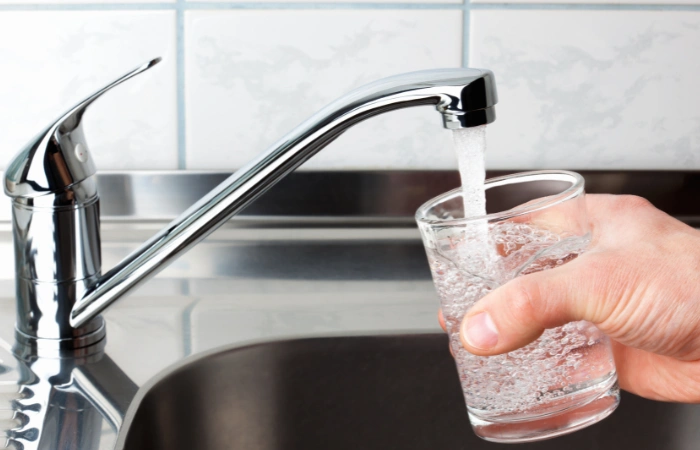
Water quality is essential for public health, environmental sustainability, and overall quality of life. In Minneapolis, ensuring the water is safe and clean involves understanding various factors that can influence it. From natural processes to human activities, numerous elements can impact the quality of water. In this blog, we’ll explore the seven biggest factors affecting the quality of water in Minneapolis, providing insights into each to help maintain clean and safe water.
What Is Water Quality?
Water quality pertains to the chemical, physical, and biological characteristics of water, usually in relation to its suitability for a particular purpose. For drinking water, high quality means it’s free from harmful contaminants and safe for consumption. For recreational water, it poses no health risk to those engaging in water activities. Maintaining the quality of water is essential for health, ecosystem balance, and community well-being.
Additionally, proper plumbing systems play a significant role in preserving the quality of water by preventing leaks, ensuring clean water delivery, and effectively removing wastewater. Regular plumbing maintenance, including leak inspection, pipe upgrades, and backflow prevention device installation, is crucial in protecting the quality of water.
Different Types of Water Quality
The quality of water can be assessed in different contexts, depending on its use and the needs of the ecosystem or community it serves. Here’s an overview of the primary types of water quality that are critical for Minneapolis:
Potable Water
Potable water is water that is suitable for human consumption. It meets drinking water standards set by regulatory agencies, which ensures it is free from harmful contaminants and pathogens. Potable water undergoes rigorous treatment processes to remove pollutants and pathogens, making it safe for drinking, cooking, and personal hygiene.
Palatable Water
Palatable water is aesthetically pleasing to taste and smell, in addition to being safe for consumption. While potable water meets health-based standards, palatable water also considers factors like taste, odor, and appearance. Palatable water enhances user satisfaction and encourages adequate hydration, contributing to overall well-being.
Contaminated (Polluted) Water
Contaminated water contains harmful substances or pollutants that pose risks to human health, aquatic life, and the environment. Sources of contamination can include industrial discharges, agricultural runoff, urban runoff, and wastewater effluents. Common pollutants include heavy metals, pesticides, pathogens, and organic chemicals. Contaminated water requires remediation measures to restore its quality and prevent adverse effects on public health and ecosystems.
Infected Water
Infected water refers to water contaminated with disease-causing microorganisms, such as bacteria, viruses, and parasites. Fecal contamination from human or animal waste is a common source of waterborne diseases. Ingesting or coming into contact with infected water can lead to health effects such as gastrointestinal illnesses, skin infections, and chronic diseases.
7 Factors That Affect Water Quality in Minneapolis

Minneapolis is a vibrant city with a complex interplay of natural and human activities that impact the quality of water. Grasping these factors is crucial for maintaining the health and safety of our water resources. Here, we detail the seven most significant factors affecting water quality in Minneapolis and offer insights into each:
1. Agricultural Runoff
Agriculture is a significant part of Minnesota’s economy, but it can have a negative impact on water quality. Runoff from farms often contains pesticides, fertilizers, and animal waste, which can enter water bodies, leading to nutrient pollution and harmful algal blooms. These blooms can produce toxins harmful to humans and animals, making water treatment more challenging.
2. Urban Runoff
Urban areas contribute to the quality of water issues through runoff from streets, lawns, and buildings. This runoff often carries oil, grease, heavy metals, and other pollutants from urban surfaces into water bodies. Impervious surfaces like roads and sidewalks hinder water absorption into the soil, worsening runoff issues.
3. Industrial Discharges
Industrial facilities can discharge pollutants directly into water bodies or through the wastewater treatment system. These pollutants can include heavy metals, chemicals, and organic waste, all of which can degrade water quality if not properly managed and treated before release.
4. Wastewater Treatment Plants
While wastewater treatment plants are designed to clean water before it is returned to the environment, they can sometimes fail to remove all contaminants. Pharmaceuticals, personal care items, and other emerging contaminants can pass through these plants, entering rivers and lakes and impacting the quality of water.
5. Leaking Septic Systems
In regions not connected to municipal sewer systems, septic systems treat household wastewater. Without proper upkeep, these systems can develop leaks, allowing untreated waste to contaminate groundwater and nearby surface water. This can introduce pathogens and nutrients into water sources, posing health risks.
6. Stormwater Management
Effective stormwater management is vital for maintaining the quality of water. Without proper systems in place, stormwater can carry pollutants from streets, rooftops, and landscapes directly into water bodies. This not only increases pollution but also leads to erosion and habitat destruction in aquatic environments.
7. Climate Change
Climate change impacts the quality of water through altered precipitation patterns, raised temperatures, and more frequent extreme weather events. Heavy rains can lead to more runoff and flooding, while higher temperatures can affect water chemistry and biology, leading to lower oxygen levels and altered ecosystems.
FAQs
What can residents do to help maintain the quality of water?
Residents can help maintain the quality of water by properly disposing of household chemicals and pharmaceuticals, which decreases the use of fertilizers and pesticides, conserving water, and supporting local cleanup initiatives.
How does plumbing affect the quality of water in my home?
Plumbing plays a crucial role in preserving the quality of water by delivering clean water and removing wastewater. Properly installed and maintained plumbing systems prevent leaks and contamination, ensuring that the water you use for drinking, cooking, and bathing is safe.
What are common plumbing issues that can impact water quality?
Common plumbing issues include leaks, pipe corrosion, and backflow. Leaks can introduce impurities into the water supply, while corroded pipes may release harmful metals like lead into the water. Backflow arises when contaminated water flows back into the clean water supply, posing a risk to health.
Conclusion
Water quality is paramount for public health and environmental sustainability in Minneapolis. Grasping the factors that influence the quality of water is essential for guaranteeing safe and clean water for all residents. From agricultural runoff to industrial discharges and urban runoff, various elements can impact the quality of water in our community.
Moreover, plumbing systems play a significant role in preserving the quality of water. For reliable plumbing solutions and assistance in maintaining water quality, consider contacting True Plumbing Solutions. Reach out to us to learn more about our plumbing services and how we can help ensure clean and safe water for your home and community.

